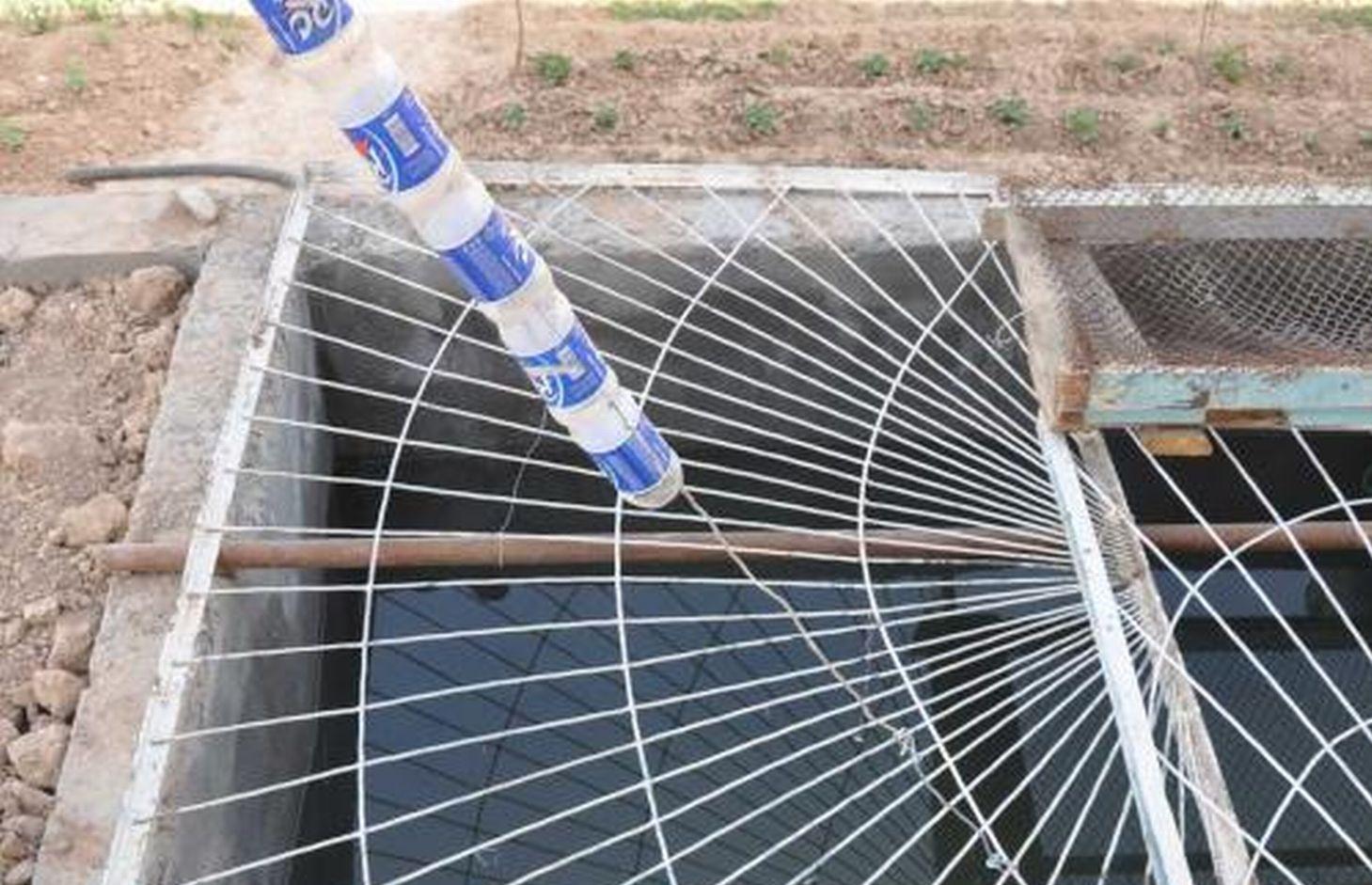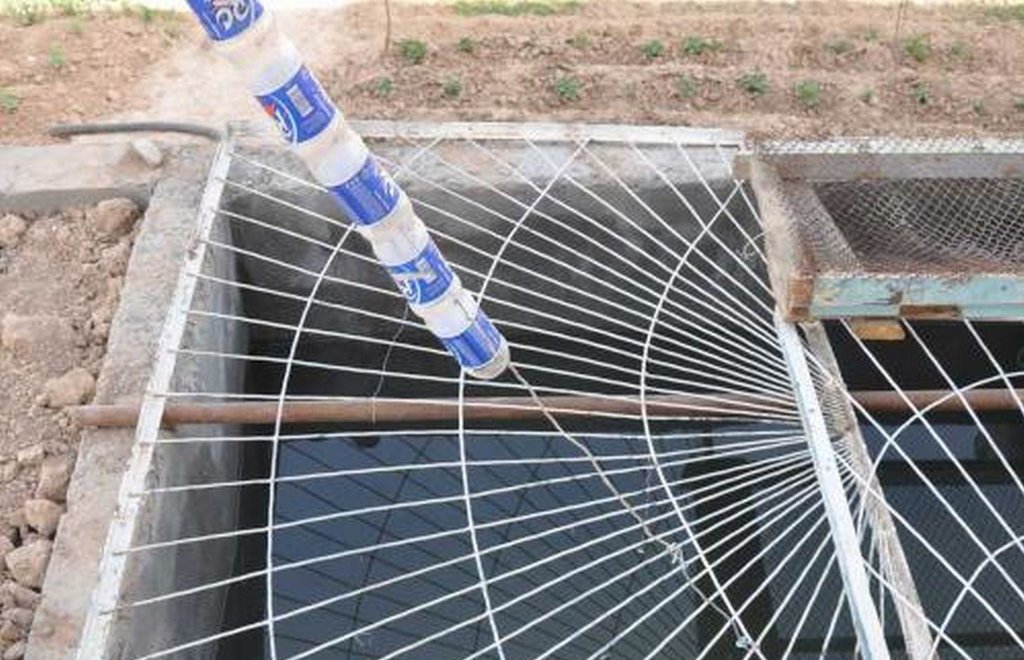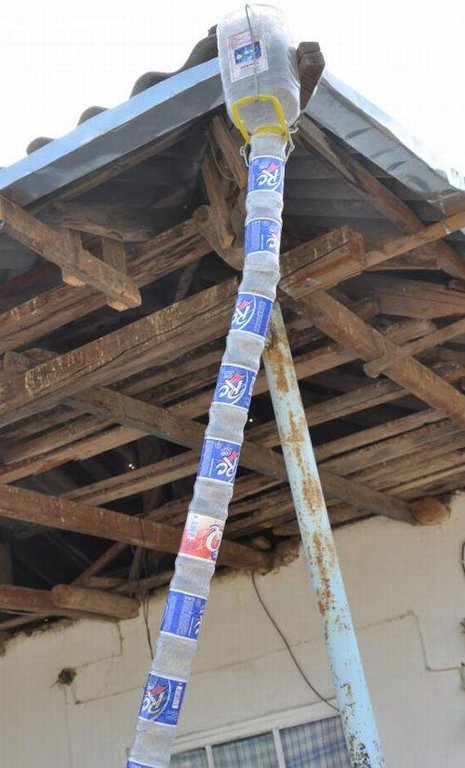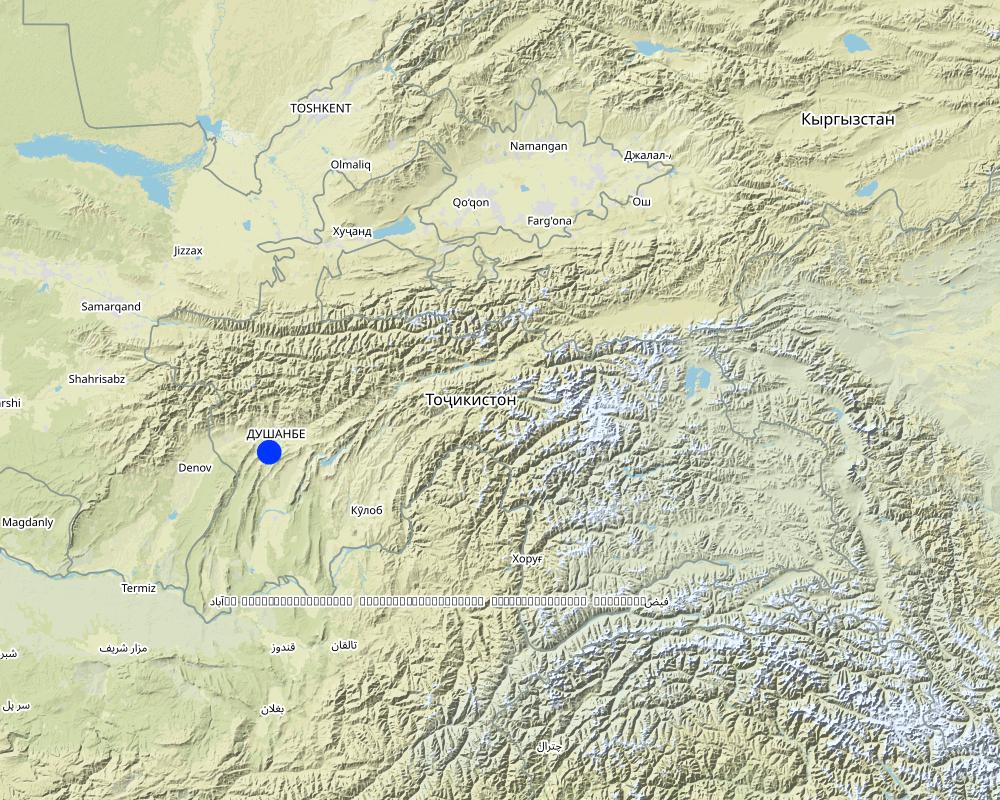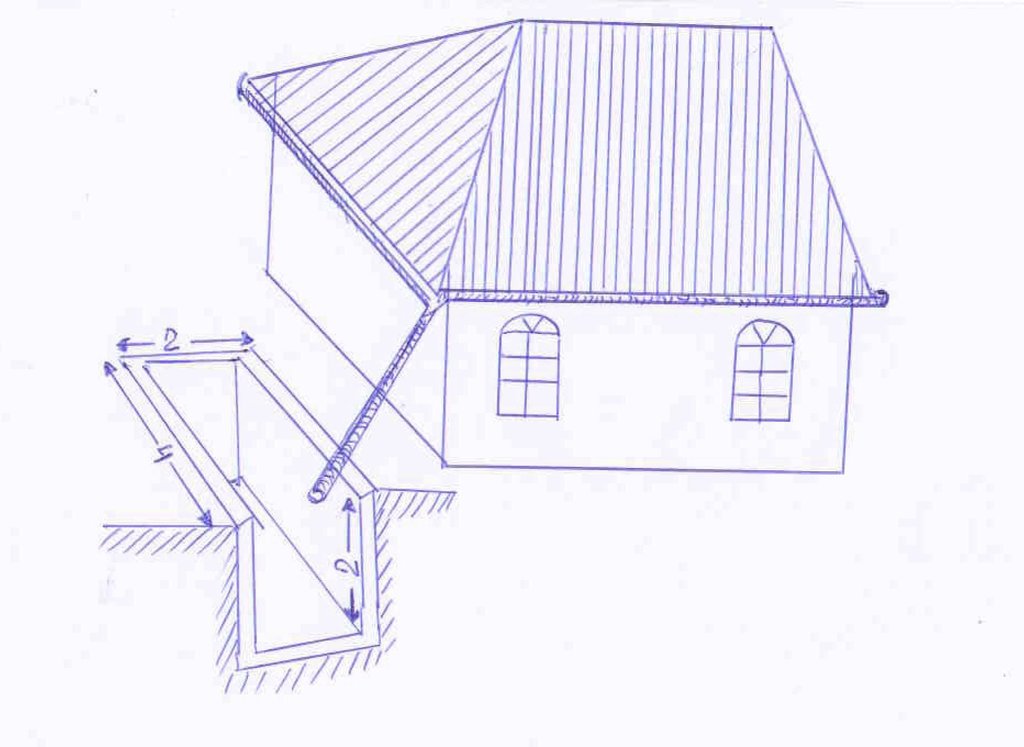Roof Top Rain Water Harvesting - Concrete Tank [Tajikistan]
- Creation:
- Update:
- Compiler: Sa'dy Odinashoev
- Editor: –
- Reviewers: Deborah Niggli, David Streiff, Alexandra Gavilano, Joana Eichenberger
Чамоварии оби борон
technologies_1460 - Tajikistan
- Full summary as PDF
- Full summary as PDF for print
- Full summary in the browser
- Full summary (unformatted)
- Roof Top Rain Water Harvesting - Concrete Tank: Aug. 21, 2019 (inactive)
- Roof Top Rain Water Harvesting - Concrete Tank: Nov. 2, 2021 (public)
- Roof Top Rain Water Harvesting - Concrete Tank: April 4, 2018 (inactive)
- Roof Top Rain Water Harvesting - Concrete Tank: July 21, 2017 (inactive)
- Roof Top Rain Water Harvesting - Concrete Tank: May 6, 2017 (inactive)
- Roof Top Rain Water Harvesting - Concrete Tank: March 16, 2017 (inactive)
View sections
Expand all Collapse all1. General information
1.2 Contact details of resource persons and institutions involved in the assessment and documentation of the Technology
SLM specialist:
Name of project which facilitated the documentation/ evaluation of the Technology (if relevant)
Book project: Water Harvesting – Guidelines to Good Practice (Water Harvesting)Name of project which facilitated the documentation/ evaluation of the Technology (if relevant)
Pilot Program for Climate Resilience, Tajikistan (WB / PPCR)Name of the institution(s) which facilitated the documentation/ evaluation of the Technology (if relevant)
CARITAS (Switzerland) - SwitzerlandName of the institution(s) which facilitated the documentation/ evaluation of the Technology (if relevant)
CAMP - Central Asian Mountain Partnership (CAMP - Central Asian Mountain Partnership) - KyrgyzstanName of the institution(s) which facilitated the documentation/ evaluation of the Technology (if relevant)
NCCR North-South (NCCR North-South) - Kyrgyzstan1.3 Conditions regarding the use of data documented through WOCAT
The compiler and key resource person(s) accept the conditions regarding the use of data documented through WOCAT:
Yes
2. Description of the SLM Technology
2.1 Short description of the Technology
Definition of the Technology:
The roof top rain water harvesting system using a concrete tank was designed to improve household access to water for irrigation of kitchen garden plots during the hot and dry summer months.
2.2 Detailed description of the Technology
Description:
A 16 cubic metre concrete tank situated in the shadow of the house constructed to retain rainwater that collects in the roof guttering.
Purpose of the Technology: The purpose of the tank is to retain water to be used for drinking, sanitation and irrigation during the hot and dry summer months. The retained water allows for the irrigation of kitchen garden plots and more diverse crops, and hence should improve the livelihoods of households involved.
Establishment / maintenance activities and inputs: There are three main elements to the construction of the rainwater harvesting system. The first is the construction of a metal gutter on wooden supports around the perimeter of the roof; second, the construction of a concrete pool in the shadow of the house; and finally the provision of a connection pipe between the gutter and the pool. The pool needs to be cleaned periodically to prevent contamination and build up of algae around the edge the pool.
Natural / human environment: During the Soviet period the water supply for the village was supplied through a concrete storage tank located at the foot of the hills above the village. After the collapse of the Soviet Union the concrete tank and its associated infrastructure fell into disrepair. As a result the inhabitants were faced with water shortages, especially during the hot dry summers. In response to this issue the residents invested time, finance and resources into constructing rainwater collection systems.
2.3 Photos of the Technology
2.5 Country/ region/ locations where the Technology has been applied and which are covered by this assessment
Country:
Tajikistan
Region/ State/ Province:
Tajikistan
Further specification of location:
Rudaki, Boshkengash
Specify the spread of the Technology:
- applied at specific points/ concentrated on a small area
Comments:
Система сбора дождевой воды с крыш, которая продускает воду в бетонную цистерну, существует во многих сельских домах
Map
×2.6 Date of implementation
If precise year is not known, indicate approximate date:
- 10-50 years ago
2.7 Introduction of the Technology
Specify how the Technology was introduced:
- through land users' innovation
Comments (type of project, etc.):
The land owner built the concrete tank in 2010, however numerous other tanks have been constructed during the last 10 years.
3. Classification of the SLM Technology
3.1 Main purpose(s) of the Technology
- access to water
3.2 Current land use type(s) where the Technology is applied

Cropland
- Annual cropping
- Tree and shrub cropping
Annual cropping - Specify crops:
- vegetables - other
Tree and shrub cropping - Specify crops:
- fruits, other
Number of growing seasons per year:
- 1
Specify:
Вегетативный период (дни): 220. Вегетативный период по месяцам: Март-Ноябрь

Forest/ woodlands
Products and services:
- Fruits and nuts

Settlements, infrastructure
- Settlements, buildings
Remarks:
Населенный пункт с небольшими огородами
Comments:
Основные проблемы землепользования (по мнению составителя): В районе кишлака выпадает 600мм/год осадков, однако они выпадают только в период двух месяцев года. Земля в пределах кишлака стала сильно сухой и, таким образом, более оголенной и непригодной для культивации.
Основные проблемы землепользования (по мнению землепользователя): Недостаток воды в критические периоды года.
Экологические услуги леса: плоды и орехи
Будущее землепользование (после внедрения УЗП технологии): Пашня: Ct: выращивание кустов и деревьев
Тип севооборота: Вода собранная с крыш используется для полива приусадебных участков. На этих участках обычно выращивают лук, картошку и морковку, а также фруктовые деревья.
Ограничение поселения: земля, где будет построена цистерна, может быть используется для выращивания овощей
Если использование земель изменилось с началом применения Технологии, укажите тип землепользования до применения Технологии:
Смешанный: Mo: другое
3.3 Has land use changed due to the implementation of the Technology?
Has land use changed due to the implementation of the Technology?
- Yes (Please fill out the questions below with regard to the land use before implementation of the Technology)

Cropland
- Tree and shrub cropping
Is intercropping practiced?
Yes
If yes, specify which crops are intercropped:
Недостаток воды в критические периоды года.
Экологические услуги леса: плоды и орехи

Forest/ woodlands

Settlements, infrastructure
Remarks:
Вода собранная с крыш используется для полива приусадебных участков. На этих участках обычно выращивают лук, картошку и морковку, а также фруктовые деревья.
3.4 Water supply
Water supply for the land on which the Technology is applied:
- rainfed
3.5 SLM group to which the Technology belongs
- water harvesting
3.6 SLM measures comprising the Technology

agronomic measures
- A7: Others

structural measures
- S5: Dams, pans, ponds
Comments:
Main measures: structural measures
3.7 Main types of land degradation addressed by the Technology

soil erosion by water
- Wt: loss of topsoil/ surface erosion

soil erosion by wind
- Et: loss of topsoil
Comments:
Main type of degradation addressed: Wt: loss of topsoil / surface erosion
Secondary types of degradation addressed: Et: loss of topsoil
Main causes of degradation: over-exploitation of vegetation for domestic use (The domestic plots were over used due to poor water supply.)
Secondary causes of degradation: deforestation / removal of natural vegetation (incl. forest fires) (This occured previously and the trees were not replaced.), other human induced causes (specify) (After the collapse of the Soviet Union the concrete tank and it's associated infrastructure fell into disrepair.), change of seasonal rainfall (Less rainfall at critical times impacted on cultivation activity.), Heavy / extreme rainfall (intensity/amounts) (Lack of vegetation results in higher losses of soil erosion during heavy rainfall events.), droughts (Longer dry periods in the summer months.), population pressure (The population and number of houses in the village is increasing.)
3.8 Prevention, reduction, or restoration of land degradation
Specify the goal of the Technology with regard to land degradation:
- reduce land degradation
Comments:
Main goals: mitigation / reduction of land degradation
4. Technical specifications, implementation activities, inputs, and costs
4.1 Technical drawing of the Technology
Technical specifications (related to technical drawing):
Чертеж показывает металлический желоб (0,15м шириной), располагаемый по периметру верхушки крыши. Желоб собирает дождевую воду с крыши и через пластиковую трубу, сделанную из старых бутылок, соединенных друг с другом путем обвязки, пропускает ее в бетонную цистерну. В данном примере, протяженность цистерны 4м, ширина -2м, глубина – 2м и расположена она в тени дома для того, чтобы снизить уровень испарения. Цистерна расположена с уклоном и частично заглублена вверх по склону. Цистерна закрыта в целях безопасности и предотвращения внешнего загрязнения.
Место расположения: Бошкенгаш. Рудаки
Дата: 20011-05-06
Необходимые технические навыки для землепользователей: средний (Требуется техническое знание, иначе конструкция рухнет)
Основные технические функции: сбор воды / повышение водоснабжения
яма/ цистерна/ пруд
Глубина канав/ям/дамб (м): 2
Ширина канав/ям/дамб (м): 2
Длина канав/ям/дамб (м): 4
Особенность ямы/ цистерны/ пруда: емкость 16м3
Площадь, с которой собирается вода: 20м2
Крутизна склона внутри ямы: 0%;
Крутизна склона снаружи ямы: 0%
Другие особенности: размер цистерны 2*2*4м
Сбор воды: разница между площадью, с которой собирается вода, и площадью, куда она собирается: 1:0.5
Lieu: Boshkengash. Rudaki, Tadjikistan
Date: 20011-05-06
Connaissances techniques requises pour les utilisateurs fonciers: moyen (Certaines connaissances technique sont requises ou alors la structure ne tient pas).
Principales fonctions techniques: récupération de l'eau / augmentation des réserves d'eau
Barrage / bassin / étang
Profondeur des fossés / puits / barrages (m): 2
Largeur des fossés / puits / barrages (m): 2
Longueur des fossés / puits / barrages (m): 4
Spécifications des barrages / bassins / bassins: Capacité 16m3
Zone de collecte: 20 m2m2
Zone bénéfique: 0,2 h.am2
Pente de la paroi du barrage à l'intérieur: 0%;
Pente du mur du barrage à l'extérieur: 0%
Dimensions des spillings: 0m
Autres spécifications: dimension du réservoir 2 * 2 * 4m
Pour la récolte de l'eau: le rapport entre la zone où l'eau récoltée est appliquée et la superficie totale à partir de laquelle l'eau est collectée est: 1: 0,5
Author:
Soisin Peter
4.2 General information regarding the calculation of inputs and costs
other/ national currency (specify):
Somoni
Indicate average wage cost of hired labour per day:
10.00
4.3 Establishment activities
| Activity | Timing (season) | |
|---|---|---|
| 1. | construction of concrete tank and guttering | spring |
| 2. | None | None |
4.4 Costs and inputs needed for establishment
| Specify input | Unit | Quantity | Costs per Unit | Total costs per input | % of costs borne by land users | |
|---|---|---|---|---|---|---|
| Labour | Construction of concrete tank and guttering | Persons/day | 20.0 | 22.5 | 450.0 | 100.0 |
| Equipment | Tools | pieces | 6.0 | 11.1666666 | 67.0 | 100.0 |
| Construction material | Concrete sand, stone | tons | 2.0 | 337.5 | 675.0 | 100.0 |
| Construction material | Metal guttering | tons | 0.5 | 900.0 | 450.0 | 100.0 |
| Construction material | Wood | tons | 0.5 | 240.0 | 120.0 | 100.0 |
| Construction material | Plastic pipes | pieces | 1.0 | 10.0 | 10.0 | 100.0 |
| Total costs for establishment of the Technology | 1772.0 | |||||
| Total costs for establishment of the Technology in USD | 1772.0 | |||||
Comments:
Duration of establishment phase: 2 month(s)
4.5 Maintenance/ recurrent activities
| Activity | Timing/ frequency | |
|---|---|---|
| 1. | Cleaning | annually |
4.6 Costs and inputs needed for maintenance/ recurrent activities (per year)
| Specify input | Unit | Quantity | Costs per Unit | Total costs per input | % of costs borne by land users | |
|---|---|---|---|---|---|---|
| Labour | Cleaning | Person/day | 1.0 | 25.0 | 25.0 | 100.0 |
| Total costs for maintenance of the Technology | 25.0 | |||||
| Total costs for maintenance of the Technology in USD | 25.0 | |||||
Comments:
The costs were calculated based on 2010 prices per tank.
4.7 Most important factors affecting the costs
Describe the most determinate factors affecting the costs:
Labour, tools and piping can be provided by the land user and stone for the foundation is locally available, however, there is an initial outlay of $300 for the cement, wood and metal guttering. In this example the money for the initial outlay was collected by family members working in Russia and from local salaries.
5. Natural and human environment
5.1 Climate
Annual rainfall
- < 250 mm
- 251-500 mm
- 501-750 mm
- 751-1,000 mm
- 1,001-1,500 mm
- 1,501-2,000 mm
- 2,001-3,000 mm
- 3,001-4,000 mm
- > 4,000 mm
Specifications/ comments on rainfall:
Estimated to be at the lower end of the range
Agro-climatic zone
- semi-arid
Thermal climate class: temperate
5.2 Topography
Slopes on average:
- flat (0-2%)
- gentle (3-5%)
- moderate (6-10%)
- rolling (11-15%)
- hilly (16-30%)
- steep (31-60%)
- very steep (>60%)
Landforms:
- plateau/plains
- ridges
- mountain slopes
- hill slopes
- footslopes
- valley floors
Altitudinal zone:
- 0-100 m a.s.l.
- 101-500 m a.s.l.
- 501-1,000 m a.s.l.
- 1,001-1,500 m a.s.l.
- 1,501-2,000 m a.s.l.
- 2,001-2,500 m a.s.l.
- 2,501-3,000 m a.s.l.
- 3,001-4,000 m a.s.l.
- > 4,000 m a.s.l.
Comments and further specifications on topography:
Altitudinal zone = 800m
Slopes on average: The village is located on a flat plain at the foothill of a slope.
5.3 Soils
Soil depth on average:
- very shallow (0-20 cm)
- shallow (21-50 cm)
- moderately deep (51-80 cm)
- deep (81-120 cm)
- very deep (> 120 cm)
Soil texture (topsoil):
- medium (loamy, silty)
Topsoil organic matter:
- medium (1-3%)
If available, attach full soil description or specify the available information, e.g. soil type, soil PH/ acidity, Cation Exchange Capacity, nitrogen, salinity etc.
Soil texture: Loess soils.
Soil fertility has a potential to be high when cultivated under good conditions.
Soil drainage / infiltration is medium but can be reduced under dry conditions. i.e crusts.
Soil water storage capacity is low-medium since loess material does contain some clay soils.
5.4 Water availability and quality
Ground water table:
5-50 m
Availability of surface water:
medium
Water quality (untreated):
good drinking water
Comments and further specifications on water quality and quantity:
Availability of surface water is good during spring rains and poor/none in the summer months.
Water quality (untreated) is good drinking water during winter and spring (snow and rainfall), but poor during summer.
5.5 Biodiversity
Species diversity:
- medium
Comments and further specifications on biodiversity:
Mixture of vegetables and orchards being grown.
5.6 Characteristics of land users applying the Technology
Market orientation of production system:
- subsistence (self-supply)
Off-farm income:
- 10-50% of all income
Relative level of wealth:
- average
Individuals or groups:
- individual/ household
Level of mechanization:
- manual work
Gender:
- women
- men
Indicate other relevant characteristics of the land users:
Land users applying the Technology are mainly common / average land users
Population density: 100-200 persons/km2
Annual population growth: 1% - 2%
15% of the land users are rich.
70% of the land users are average wealthy (for the land user used for this example).
15% of the land users are poor.
Off-farm income specification: The residents do not have a significant income from their garden plots.
Market orientation of production system: The water is for personal use.
Level of mechanization: All work is done by hand.
5.7 Average area of land used by land users applying the Technology
- < 0.5 ha
- 0.5-1 ha
- 1-2 ha
- 2-5 ha
- 5-15 ha
- 15-50 ha
- 50-100 ha
- 100-500 ha
- 500-1,000 ha
- 1,000-10,000 ha
- > 10,000 ha
Is this considered small-, medium- or large-scale (referring to local context)?
- small-scale
5.8 Land ownership, land use rights, and water use rights
Land ownership:
- state
Land use rights:
- individual
Water use rights:
- individual
Comments:
In regards to the water in the tank, household plots are allocated by the local government. All land is owned by the state.
5.9 Access to services and infrastructure
health:
- poor
- moderate
- good
education:
- poor
- moderate
- good
technical assistance:
- poor
- moderate
- good
employment (e.g. off-farm):
- poor
- moderate
- good
markets:
- poor
- moderate
- good
energy:
- poor
- moderate
- good
roads and transport:
- poor
- moderate
- good
drinking water and sanitation:
- poor
- moderate
- good
financial services:
- poor
- moderate
- good
6. Impacts and concluding statements
6.1 On-site impacts the Technology has shown
Socio-economic impacts
Production
crop production
Comments/ specify:
Due to access to water in the summer months
wood production
Comments/ specify:
From the increased number of fruit trees.
risk of production failure
product diversity
Water availability and quality
drinking water availability
Quantity after SLM:
16 cub m
Comments/ specify:
Readily available especially in the summer months.
water availability for livestock
Quantity after SLM:
16 cub m
Comments/ specify:
Dramatically increased, in the summer months.
irrigation water availability
Quantity after SLM:
16 cub m
Comments/ specify:
During the drought periods.
Income and costs
expenses on agricultural inputs
Comments/ specify:
In some households water had to be purchased.
workload
Comments/ specify:
No collection of water from distant sources.
Other socio-economic impacts
Potential debt issues if finance is borrowed for the initial outlay
Comments/ specify:
Initial outlay in the region of $400
Socio-cultural impacts
food security/ self-sufficiency
Comments/ specify:
Able to grow more and of a better quality.
conflict mitigation
Comments/ specify:
Previously residents had to wait at water points.
Hygiene and sanitation
Comments/ specify:
Constant access to water dramatically improves sanitation levels in the village.
Livelihood and human well-being
Comments/ specify:
Permanent access to water has dramatically improved the sanitation and hygiene levels, and increased crop quality and diversification. It has also improved the quality of and access to drinking water, and therefore has significant health benefits.
Ecological impacts
Water cycle/ runoff
water quantity
Quantity after SLM:
16 cub m
Comments/ specify:
Readily available water supply.
water quality
Quantity after SLM:
16 cub m
harvesting/ collection of water
Quantity after SLM:
16 cub m
Comments/ specify:
The technology concentrates on harvesting water.
evaporation
Comments/ specify:
Tank is built in the shadow of the house.
Soil
soil moisture
Biodiversity: vegetation, animals
plant diversity
Comments/ specify:
Able to grow crops at different times of the year.
6.2 Off-site impacts the Technology has shown
water availability
6.3 Exposure and sensitivity of the Technology to gradual climate change and climate-related extremes/ disasters (as perceived by land users)
Gradual climate change
Gradual climate change
| Season | increase or decrease | How does the Technology cope with it? | |
|---|---|---|---|
| annual temperature | increase | well |
Climate-related extremes (disasters)
Meteorological disasters
| How does the Technology cope with it? | |
|---|---|
| local rainstorm | well |
Climatological disasters
| How does the Technology cope with it? | |
|---|---|
| drought | not well |
Other climate-related consequences
Other climate-related consequences
| How does the Technology cope with it? | |
|---|---|
| reduced growing period | well |
Comments:
In times of heavy rainfall and prolonged summer drought the size of the tank could be increased.
6.4 Cost-benefit analysis
How do the benefits compare with the establishment costs (from land users’ perspective)?
Short-term returns:
very positive
Long-term returns:
very positive
How do the benefits compare with the maintenance/ recurrent costs (from land users' perspective)?
Short-term returns:
very positive
Long-term returns:
very positive
Comments:
If it is constructed to a reasonable standard then it will not need any significant maintenance.
6.5 Adoption of the Technology
- > 50%
If available, quantify (no. of households and/ or area covered):
900 household (70 percent of the area covered)
Of all those who have adopted the Technology, how many did so spontaneously, i.e. without receiving any material incentives/ payments?
- 91-100%
Comments:
Comments on spontaneous adoption: The urban roof top rainwater harvesting has been replicated by many members of the community without external support.
There is a moderate trend towards spontaneous adoption of the Technology
Comments on adoption trend: People observed, and experienced the benefits, and decided that it was worth the initial investment.
6.7 Strengths/ advantages/ opportunities of the Technology
| Strengths/ advantages/ opportunities in the land user’s view |
|---|
| Improved the standard of living, and the increased access to water allowed the households to have more automony over what that grow and eat. |
| Strengths/ advantages/ opportunities in the compiler’s or other key resource person’s view |
|---|
|
Improves the provision of irrigated water for the hot dry summer periods. How can they be sustained / enhanced? Further dissemination to other households. |
|
Allowed for the improvement and expansion of kitchen gardens. How can they be sustained / enhanced? Training on keeping a kitchen garden. |
| Improved the quality and quantity of fruit yields |
|
Improved the access of water for sanitation and drinking water purposes How can they be sustained / enhanced? Education on sanitation methods. |
6.8 Weaknesses/ disadvantages/ risks of the Technology and ways of overcoming them
| Weaknesses/ disadvantages/ risks in the compiler’s or other key resource person’s view | How can they be overcome? |
|---|---|
| The perception was that the water was not clean in the concrete pool. | However, it was tested and proved to be safe to use. This provided reassurance to the household members. It would be a major benefit if the water tank remains covered and is cleaned periodically. |
| The initial outlay may be considered expensive for some families. | Many families have adopted this, possibly if many were built at once the material costs would be reduced. The technology could be tied in with micro finance activities. |
7. References and links
7.1 Methods/ sources of information
Links and modules
Expand all Collapse allLinks
No links
Modules
No modules


